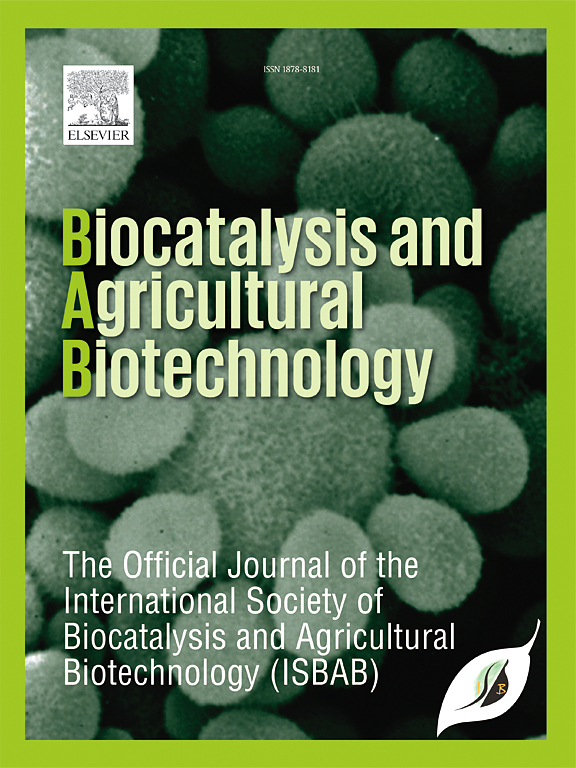Repurposing metal oxide nanoparticles for enhanced xylanase production by Aspergillus niger in corncob-based media: Taguchi optimization and paper recycling application
IF 3.4
Q2 BIOTECHNOLOGY & APPLIED MICROBIOLOGY
引用次数: 0
Abstract
The economic xylanase production for industrial applications cannot be underestimated due to its large global market size. This study therefore explores the potentials for enhanced xylanase production by a local strain of A. niger using Taguchi optimization involving metal oxide nanoparticles. The xylanases were thereafter assessed for pulp wastewater biodeinking and pulp biobleaching. Zinc oxide (XA-ZnONPs) and calcium oxide nanoparticles (XA-CaONPs) were biosynthesized by xylanase and characterized through UV–Vis spectroscopy, Fourier transform infrared spectroscopy (FTIR) and Transmission electron microscopy (TEM). Both biosynthesized XA-ZnONPs and XA-CaONPs displayed characteristic surface plasmon resonance peak at 314 and 370 nm, respectively. The FTIR revealed amine-rich functional groups as prevalent in the nanoparticles and TEM revealed their sizes as within 10.13–38.79 nm. Taguchi optimization resulted in enhanced fungal xylanase yield of 3.61-fold with XA-ZnONPs (103.55 U/ml) and 14.57-fold with XA-CaONPs (418.09 U/ml), whereby the metal oxide nanoparticles contributed 74.17–85.47 % to enhanced enzyme titers. The xylanases achieved 78.21–86.25 % ink removal efficiency in paper pulp effluent, while for the pulp, ink detachment efficiency of 37.04–82.70 % was recorded. The significant enhanced xylanase production and the remarkable deinking potential, are positive research efforts towards achieving economic xylanase production which can be applied in eco-friendly paper recycling. To the best of our knowledge, this is the first report for nanosupplementation for xylanase production by A. niger, establishing the relevance of nanotechnology for bioprocess optimization.

求助全文
约1分钟内获得全文
求助全文
来源期刊

Biocatalysis and agricultural biotechnology
Agricultural and Biological Sciences-Agronomy and Crop Science
CiteScore
7.70
自引率
2.50%
发文量
308
审稿时长
48 days
期刊介绍:
Biocatalysis and Agricultural Biotechnology is the official journal of the International Society of Biocatalysis and Agricultural Biotechnology (ISBAB). The journal publishes high quality articles especially in the science and technology of biocatalysis, bioprocesses, agricultural biotechnology, biomedical biotechnology, and, if appropriate, from other related areas of biotechnology. The journal will publish peer-reviewed basic and applied research papers, authoritative reviews, and feature articles. The scope of the journal encompasses the research, industrial, and commercial aspects of biotechnology, including the areas of: biocatalysis; bioprocesses; food and agriculture; genetic engineering; molecular biology; healthcare and pharmaceuticals; biofuels; genomics; nanotechnology; environment and biodiversity; and bioremediation.
 求助内容:
求助内容: 应助结果提醒方式:
应助结果提醒方式:


